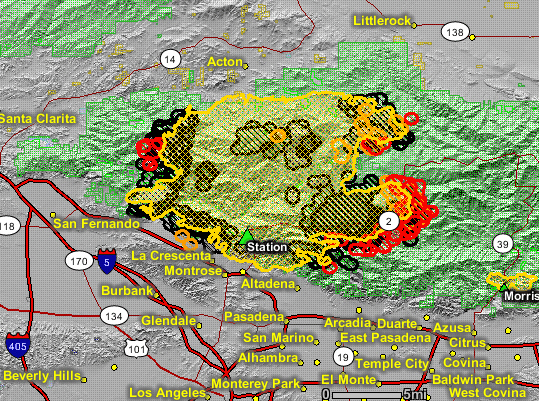
The Station fire, at 148,258 154,655 acres and 42% containment, is still very active on the southeast side and continues to grow closer to Highway 39. One of the objectives of the incident management team suppressing the fire is to keep it west of 39. Incident Commander Mike Dietrich said on September 2 about that highway:
Firefighters are “out in front, waiting for an opportunity to act in there.
So he a drew line in the sand, er, the highway, hoping to stop it, if not before it gets to Highway 39, WHEN it gets there. We wish good luck to Mr. Dietrich and the rest of the firefighters, and hope they can meet their objective.

Firefighters are exposed to carbon monoxide on fires and take measures to mitigate it, such as wearing breathing apparatus when practical. Of course, wildland firefighters do not have that luxury. The national and Los Angeles area press are hammering the Station fire incident command post with dozens of reporters, camera operators, and media vans with generators. They generally keep the engines on the vans and the generators running continuously.
On Thursday, concerned about the carbon monoxide levels in the press area and the minimal air movement, the incident safety personnel contacted the LA County Health Department to monitor the air quality. At mid-afternoon high levels of carbon monoxide were detected around the media press conference area, but returned to a safe level after the vans and generators were turned off for a couple of hours.
Fighting a wildland fire in Los Angeles is different than it is in Wisdom, Montana or Upton, Wyoming.





